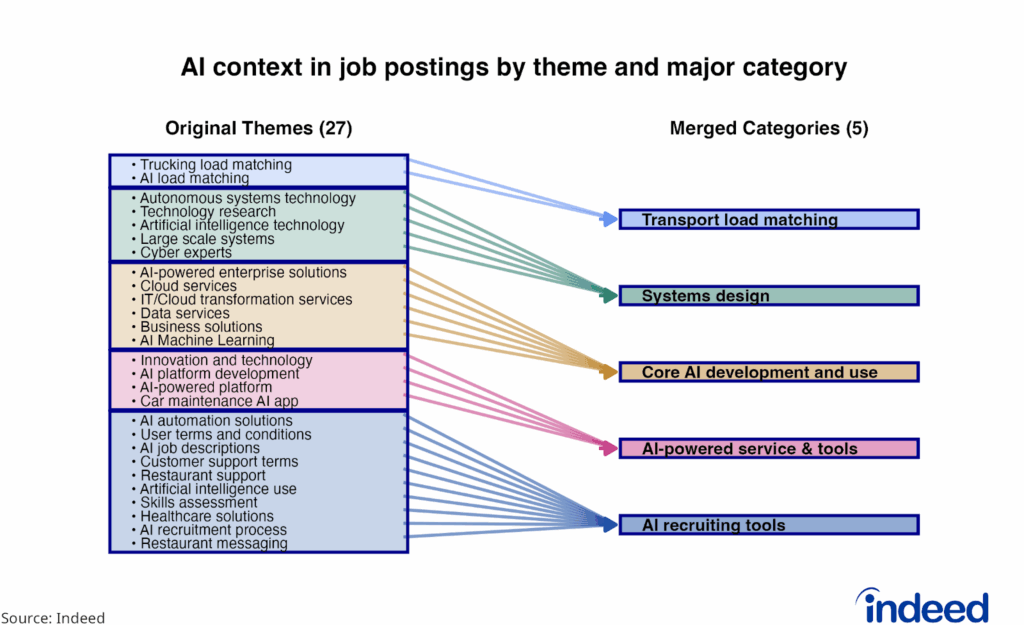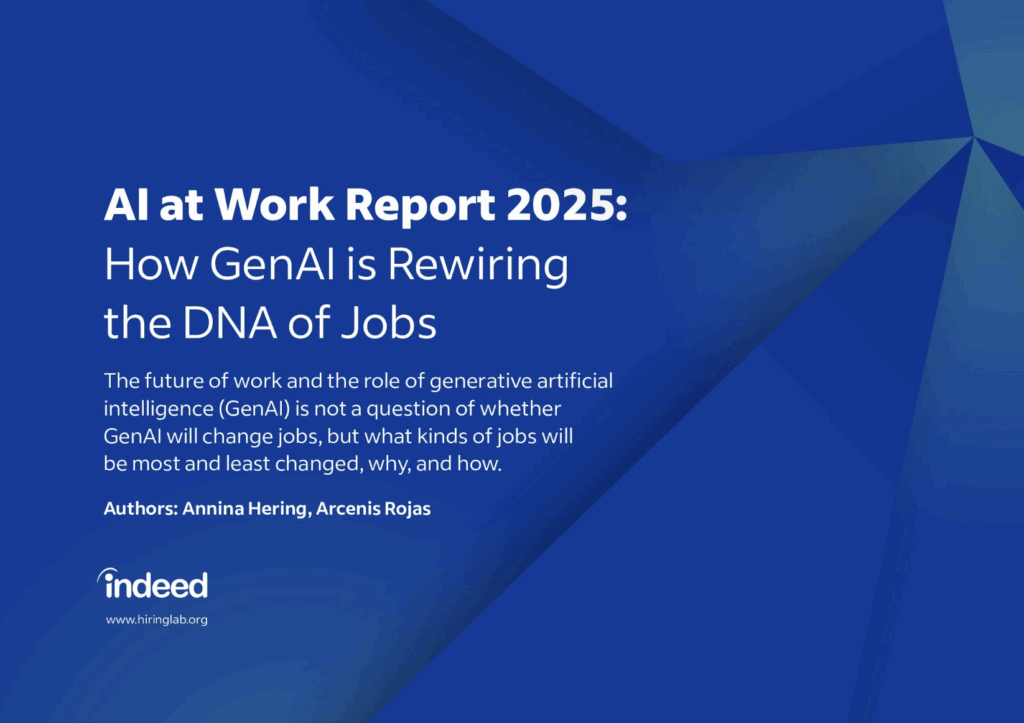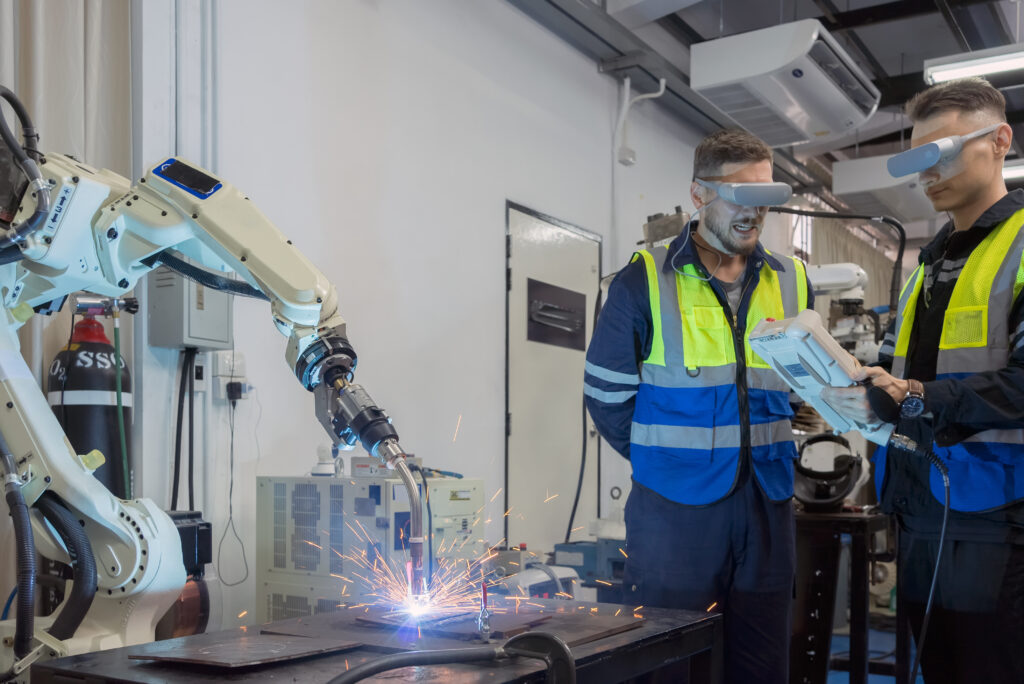Key points:
- Mentions of AI in job postings are rising, but about a quarter of those postings lack clear context on how employers plan to apply it.
- A majority (52%) of AI-related job descriptions mentioned building or directly using AI models, while 14% of postings cite using AI in recruitment.
- AI use differs by occupation. Tech, management, and creative roles appear to be driving core AI use and development, while service and healthcare roles are applying it mainly in hiring processes.
Artificial intelligence mentions are becoming more common in US job postings, but some employers are still figuring out what that means. Of the postings that mentioned AI or related terms between July 2024 and June 2025, a majority (52%) mentioned building new AI tools or directly using AI models. However, roughly a quarter provided little context for how AI would be used in the role.
When AI is mentioned in job postings, it is often referred to in general terms — including “AI,” “GenAI,” etc. — rather than in the context of specific skills. This gap between general mentions and specific skills (paired with postings that provide little context) highlights a potential difference between signaling a company or job’s AI style versus its AI substance. To cut through the noise, Hiring Lab examined the language surrounding AI mentions to better understand how employers integrate the technology into their work.
Context is key
The number of job postings mentioning AI, GenAI, and adjacent skills has grown rapidly in recent years. But a mention of AI can mean a lot of different things. Employers may use it to describe the actual work associated with the position, or as a signal to investors or potential candidates. As a result, it can be very misleading to look only at mentions of specific words or phrases in job postings. For example, if you look for AI-related phrases in job postings, you’ll see that broad mentions of AI far outnumber specific skills. In the job postings analyzed, nearly 74% used the term “AI” while only 2% specifically mentioned ChatGPT.

One way to understand what employers are looking for when they mention AI in job postings is to look at those mentions in context. This can help distinguish between cases where employers are asking for someone to build AI and those with more shallow mentions of AI, where an employer refers to the technology but fails to include a clear use case.
Hiring Lab analyzed the text surrounding every AI-related mention found within a sample of several hundred thousand job postings (based on a list of nearly 600 keywords) published on Indeed over the past year to find common themes in the surrounding words. Modern artificial intelligence techniques and tools for understanding text were used to identify and label these themes. Our analysis identified 27 themes, which were then merged into five categories based on similarity. Each job posting was then placed into one (and only one) of the five buckets:
- Core AI development & use
- AI recruiting tools
- Systems design
- AI-powered services & tools
- Transportation load matching
When multiple themes appeared in a job description, the posting was assigned to whichever category had the strongest statistical alignment.
AI development and prompting dominate, but other AI uses are emerging
These five categories show that employers are not just working on developing AI or writing prompts, but also beginning to apply it to a mix of business problems. For instance, the “transport load matching” category represents a series of job postings discussing how companies use AI to optimize trucking shipments. The “AI recruiting tools” category shows employers are also beginning to use artificial intelligence to assist in the hiring process.
These AI applications represent a small share of the postings analyzed. Within our sample of jobs, “AI recruiting tools” only represented about 13.6% of postings, and load-matching jobs were just 1%. Since the number of jobs that mention AI or related skills is a small percentage of total job postings, these represent a tiny percentage overall. Postings that best aligned thematically with building or interacting with AI models through prompts (“Core AI development and use”) accounted for the largest share of jobs, at 52%.
In addition to the five main themes identified, an informal sixth grouping emerged, comprising roughly 25% of jobs that didn’t have a clear thematic fit. This is likely a reflection of shallow mentions of AI that don’t provide much context beyond name-dropping the technology (e.g., “we are an AI-first company,” “familiarity with AI”, etc.). It may be the case that these companies are, in fact, trying to implement AI, but they aren’t clear on the use case or have chosen to exclude that information in the job description.

Understanding the thematic categories
The “core AI” category encompasses roles primarily focused on implementing AI models and working with cloud-based services. Employers frequently seek candidates with “experience in AI/ML model development & deployment.” However, some positions within this category prioritize “integrating AI solutions into products” over model development. This is reflected in the original thematic groupings, which included AI-powered enterprise solutions, cloud services, IT/Cloud transformation services, data services, business solutions, and AI/Machine learning.

Postings that lack one clear theme often discuss AI in a vague context. Some descriptions in this grouping invite job seekers to be “part of the next great AI growth story,” while others claim that “our teams implement data technology and AI to create tomorrow today.” Additionally, while some jobs in this group call for AI use or implementation, it isn’t always clear what that means.
The AI recruiting category includes postings explicitly stating that they use AI to “improve your job application experience.” It also contains several postings from restaurants that point candidates toward an AI-driven hiring platform or text messaging service. Healthcare and food service jobs stood out most in this grouping.
The last three groupings were all relatively small, but it is helpful to understand what they represent. Postings in the “systems design” category generally discuss managing “networking and data storage,” but some also mention data and cybersecurity. “AI-powered service & tools” jobs are primarily focused on using AI to serve customer needs, mainly through the use of chatbots. And finally, the “transport load matching” grouping mentions that AI is being used to match “available loads to your specific vehicle and preferences.” This shows that while AI isn’t likely to start fully driving the truck anytime soon, it is beginning to suggest when you should turn the wheel.
AI use varies greatly by occupation
Clear differences in AI use are emerging across occupational groups. Unsurprisingly, while postings for food preparation & service jobs rank low in AI development and use, 95% of AI mentions in food prep roles are related to tools used to recruit workers. Around 70% of nursing and medical technician roles that mentioned AI also did so in a recruiting context.

A few other occupational groupings jump out for their unique applications of AI on the list. The driving category is clearly the most likely to include context around using AI for load matching and optimization, appearing in 47% of postings. Insurance and human resources stand out for their use of AI-powered platforms and tools, with each including that context in more than 40% of their postings with AI mentions.
While tech roles predictably dominate core AI development and use (likely skewed more toward the development and implementation side), other occupations also stand out in the data. Arts & entertainment, marketing, and management included core AI use in more than 60% of their postings. While these roles are not developing AI per se, they are likely to implement it in business processes and through prompt-based interaction for creative and consulting purposes. Given the surge in GenAI consultants early in 2025, it isn’t surprising to see management roles featured fairly high on the list of core AI users, either.
Conclusion
The share of job postings mentioning AI remains small, but contextual analysis shows that adoption of the technology is starting to expand beyond roles that are solely focused on building artificial intelligence. Companies are starting to experiment with using AI to assist in solving business problems like hiring and logistics optimization. For employers, this suggests that now is a good time to experiment with AI and provide training so that workers can use these technologies effectively, responsibly, and ethically. For workers and job seekers, these trends represent a significant opportunity to invest in AI skills now to stay ahead of the curve.
Methodology
This analysis identifies an artificial intelligence (AI) job posting by the presence of one or more AI or Generative AI (GenAI) related keywords. A comprehensive list of 591 keywords was utilized, encompassing a broad spectrum of AI concepts such as deep learning, GenAI, agentic AI, vibe coding, and natural language processing.
For contextual analysis, keywords were flagged in hundreds of thousands of job postings. The words surrounding AI mentions were then extracted and overlapping contexts were merged. Topic modeling, performed using the BERTopic library, was applied to these condensed, AI-context-focused job descriptions. Topic representations were generated using the open-source Gemini 3 model (with 4 billion parameters). Hierarchical clustering and intertopic distance mapping were employed to merge the original 27 topics. Due to shared language in healthcare job postings and the prominence of AI recruiting use in healthcare, some mentions of patient care or healthcare innovation were integrated into this category during the topic merging process.



